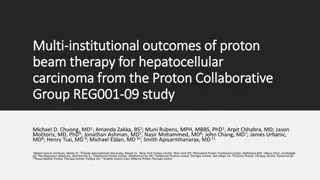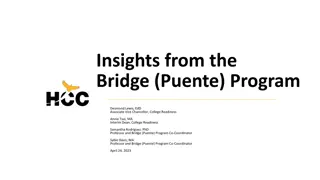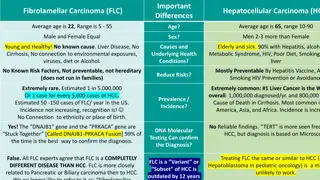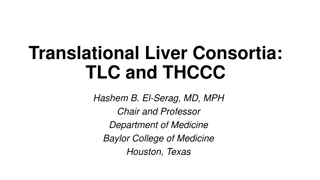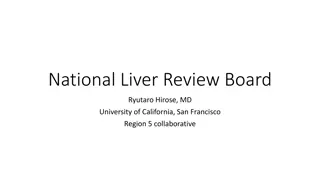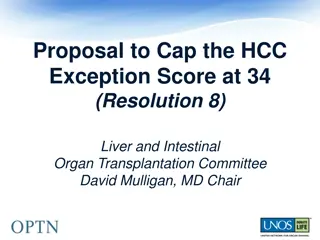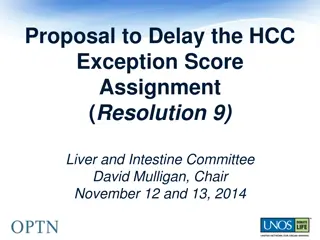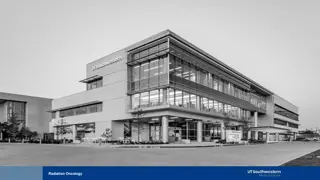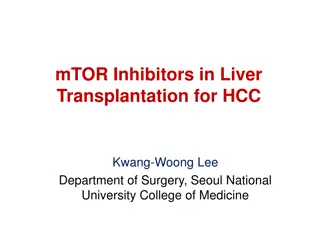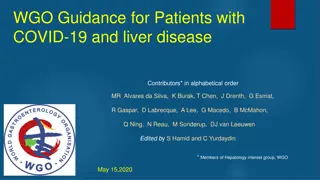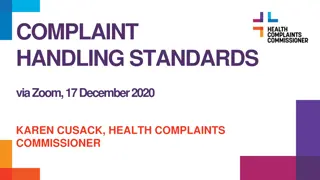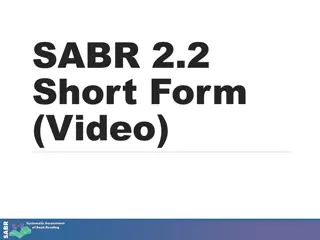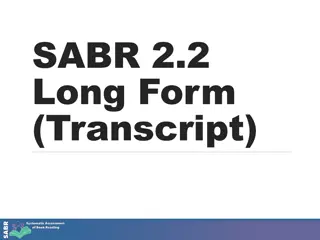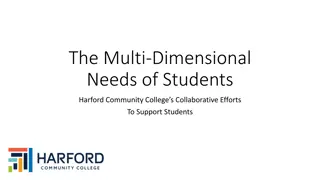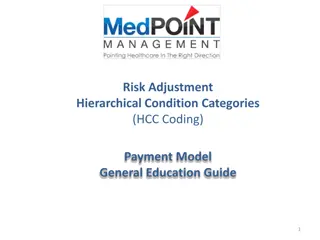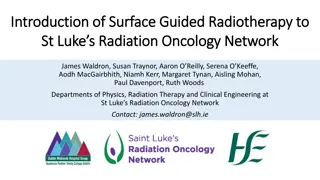
Liver Lesion Stereotactic Ablative Radiotherapy Study
Explore the study on Stereotactic Ablative Radiotherapy (SABR) for liver lesions, focusing on outcomes, methodology, and radiological results. The study evaluates the efficacy of SABR in treating patients with primary liver cancer, highlighting survival rates, safety, local control, and progression-free survival. Discover how SABR has emerged as a key treatment modality for both early and advanced stages of hepatocellular carcinoma (HCC).
Download Presentation

Please find below an Image/Link to download the presentation.
The content on the website is provided AS IS for your information and personal use only. It may not be sold, licensed, or shared on other websites without obtaining consent from the author. If you encounter any issues during the download, it is possible that the publisher has removed the file from their server.
You are allowed to download the files provided on this website for personal or commercial use, subject to the condition that they are used lawfully. All files are the property of their respective owners.
The content on the website is provided AS IS for your information and personal use only. It may not be sold, licensed, or shared on other websites without obtaining consent from the author.
E N D
Presentation Transcript
Stereotactic ablative radiotherapy (SABR) for liver lesions Boris Wagner/Stephen Falk HPB Clinical Audit & Governance 1stMarch 2024
Background HCC is the most common type of primary liver cancer and the fourth most common cause of cancer-related death worldwide (1). Patients with HCC frequently present with advanced disease on a background of hepatic decompensation, limiting treatment options. Technological advances in the delivery of SABR and an increasing body of literature establishing high rates of local control with low rates of toxicity have led to SABR becoming a key treatment modality in the management of both early and more advanced HCC (12-16).
Audit Aim The aim of this study was to evaluate the outcomes of HCC patients treated with SABR in a tertiary referral hepatobiliary (HPB) centre in the UK. Primary outcomes were: o overall survival (OS) and o safety (toxicity) Secondary outcomes were: o local control (LC), o progression-free survival (PFS) and o feasibility of SABR as a treatment for HCC
Methodology All patients who received SABR for HCC liver lesions between July 2020 and August 2022 were retrospectively analysed. Eligibility for SABR was determined via the weekly HPB cancer MDT. Patient, treatment and follow-up details were obtained from online patient records and imaging. Patients were aimed to be followed up at three months, six months and then at six-monthly intervals until two years with liver function tests, AFP estimation and CT/MRI imaging as appropriate. Reported toxicities were obtained either from clinic follow-up documentation, hospital admission or General Practitioner (GP) records where available.
Results A total of 32 patients received SABR over the study period. Median age was 73 years (range 47 to 85). Clinical details Overall, 47% (15/32) of patients had undergone previous liver-directed therapies for HCC (liver resection, TACE or RFA/MWA). Patients underwent SABR because; they were deemed medically unfit for surgery (22/32), treatment alternatives were deemed technically impossible (9/32) or due to patient choice (1/32). ).
Radiological Outcomes Median follow-up was 12 months (range 4 to 30). Rate of OS was 78% (25/32) at 12 months. Overall, 72% (n=23/32) achieved LC, while progression occurred in 31% (n=10/32). Median time to progression was 6 months (range 3 to 31). A total of 60% of patients with disease progression received further liver-directed therapies; TACE (3/10), transplant (1/10), MWA (1/10) or systemic therapy (1/10). Of the patients who received previous liver-directed therapies prior to treatment with SABR (n=15/32), LC was achieved in 80% (n=12/15).
Safety Overall, 10 patients reported Grade 1 or 2 toxicities (10/32, 31%); (6) gastrointestinal symptoms (nausea, diarrhoea), (5) fatigue and (3) localised rib discomfort. No patients in the study cohort reported any Grade toxicities. 3
Discussion Here we present the results of a single-centre experience of the introduction of SABR for HCC. These data suggest SABR is safe in this setting, without severe toxicities (Grade 3) reported and just one in three patients experiencing mild toxicities. SABR is a suitable treatment option in patients who had previously received liver-directed therapies, as was the case in half of the patients in this cohort . We show SABR remained effective, with three-quarters of patients still alive at 12 months post- treatment and seven out of 10 patients free from disease at this stage. Despite this, one in three patients developed disease progression.
Conclusions SABR is an effective treatment option for non-surgical candidates or as additional palliative treatment for patients with HCC SABR can be delivered over a short period of time with low levels of toxicity even after previous liver-directed therapies and despite significant comorbidity Subsequent liver-directed therapies remain feasible after SABR Further research is warranted to examine the clinical benefits of combination treatment with SABR and other treatment
Future 68 patients received SABR for colorectal liver metastases over the same time period Radiological data yet to be analysed
Acknowledgements Thank you for listening! Special thanks to Prof Callaway for taking the time to go through all the imaging and Dr James Orr for his helpful input!


